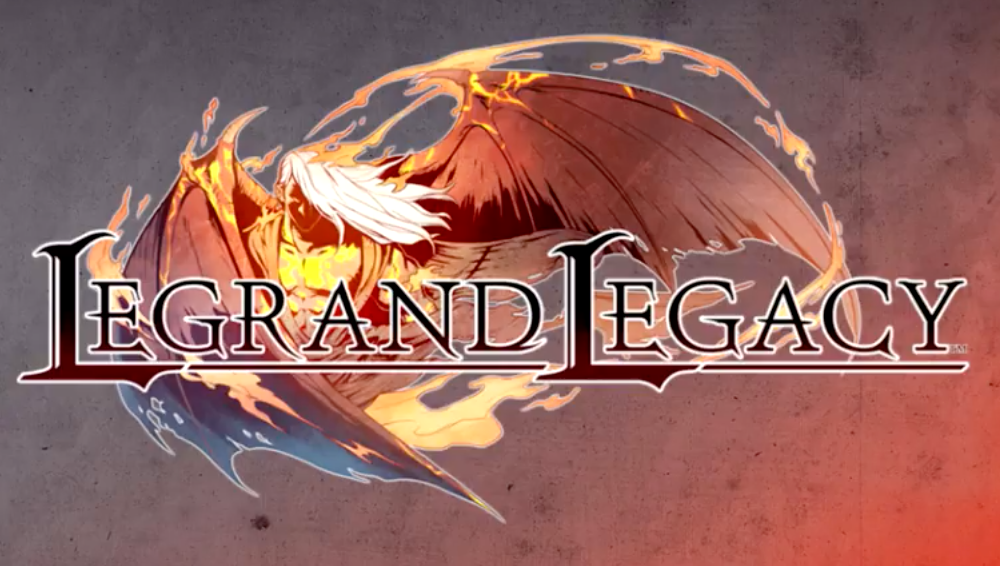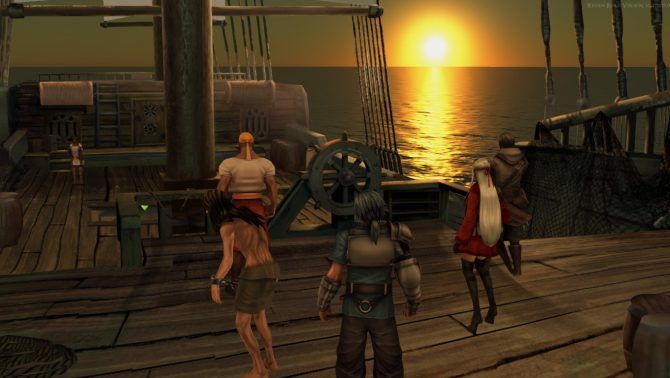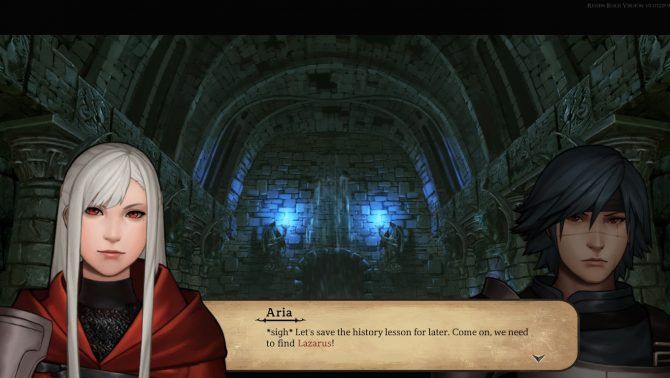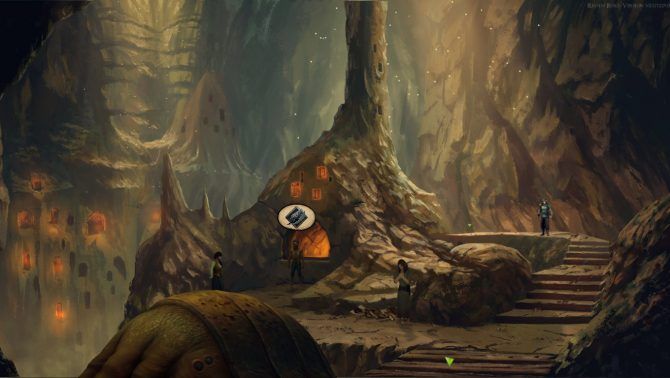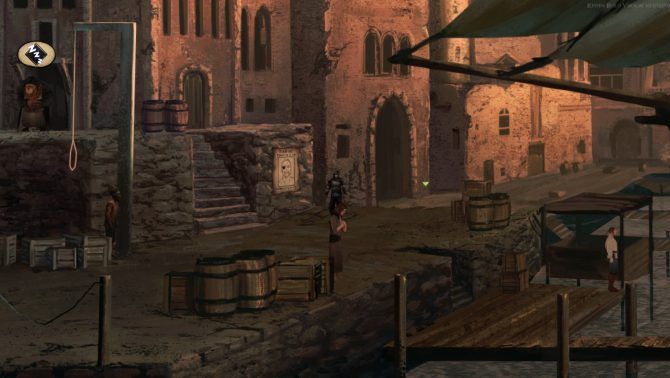Being around for RPGs during the original PlayStation era definitely showed how adventurous developers were willing to go with the more improved technology. With the release of games like Final Fantasy VII and The Legend of Dragoon, the bar was set high in terms of what gamers expect from the genre and it seems like developers have been surpassing those expectations ever since. However, with the popularity of retro-inspired games on the rise (especially from the indie developer community) it's strange we don't see more games that replicate the PlayStation era RPGs from our past.
Thankfully, Semisoft has heard the cries of these particular fans and developed Legrand Legacy: Tale of the Fatebounds. Here is a game that aims to bring everything that we remember about these original PlayStation RPGs onto modern hardware for old and new fans of the genre. What's most impressive about Legrand Legacy: Tale of the Fatebounds is the presentation is spot on since the developers clearly know how to create a game in this graphical style and in my time with the game, I was transported back to 1999 with minimal speed bumps along the way.
Legrand Legacy: Tale of the Fatebounds tells the story of a slave named Finn who doesn't remember his past and only knows of his life in a cell. Eventually, Finn finds himself in a fight to the death tournament where he finds out that he cannot kill his opponent. This is an action that is punishable by death, but luckily he is saved by an old traveler. From here the story takes off and introduces new characters as well as the actual premise of the game. As the party grows and adds new additions we find out that they are connected and known as the Fatebounds. Coincidentally, a prophecy says that the Fatebounds will be the ones to put an end to the war that is ruining their world, Legrand.
Although the plot seems like your generic "unlikely hero" story, Finn's character develops far beyond the robotic slave that we meet at the beginning of the game. Furthermore, even though the story has the player control Finn, the entire party takes on an important role in the story. I enjoyed the main premise and the twists that it takes on in the later parts of the game, but some scenes can get a bit chatty with characters coming off redundant during dialog. With that said, every character has a unique personality that makes them seem like odd traveling partners, but it works. This is because they each have their personal strengths and it makes up for the other member's weakness which created a perfect balance in the party.
However, in terms of the lengthy dialog, there are some scenes that occur and the story doesn't really return to the issues that the scene created, or when it does, it's not until hours later when I've already forgotten about the scene they are referring to. For example, one of the most notable main characters, Eris, shows a really dark side of her in the beginning of the game, but after a brief exchange of dialog they more or less just move on. I feel like this scene, in particular, could have potentially been an underlining issue with Eris, but we don't see exactly what she is capable of until ten hours later.
Aside from the story, the battle system of Legrand Legacy: Tale of the Fatebounds is one that is sure to inject loads of nostalgia into fans of the genre. Reminiscent of The Legend of Dragoon, each attack or guard is followed by a face button press that could strengthen the player's action depending on the when the button is pressed. This means it won't be possible to just spam the X button until the battle is over.
Instead, each fight requires a certain amount of attention in order to survive any of the battles because missing a button press often results in a missed attack. I feel like Semisoft knew this could become repetitive to an extent because the speed of the battles are so well optimized that I found the length of them to be typical to what I'd expect from a typical turn-based system.
Each enemy has a weakness to a weapon or magic type, but I didn't run into too much trouble using the same party of three throughout most of the game. The option to switch between party members is there, but the only time I switched characters was during boss battles so I could use every character's special attack, which is represented by a gauge that fills up slowly after landing an attack. These special attacks can be pretty overpowered at times and can make some of the bosses come off a little easier. However, some bosses do have gimmicks that require special needs to be met during the battle in order to land an attack.
Weapons are upgraded and purchased with materials found in dungeons and battles. Some items are difficult to find, but I found the system to be fairly straightforward and never found myself missing too many items to acquire a stronger weapon. This means there is some farming that needs to be done if I wanted the more powerful weapons found throughout the game, but this also benefited me in the end because I was grinding levels at the same time.
I'm sure the graphics might come up as an issue to some gamers, but I must say that the character models and battle animations all work for me. This is a game that is made to look and sometimes feel like an RPG from the original PlayStation days and it does just that. However, I would have liked to see more enemy types and they also reused many of the NPC models, but they are still an indie team.
The environmental backgrounds found in Legrand Legacy: Tale of the Fatebounds are simply beautiful. I loved exploring each and every area since they are unique and full of detail. Sadly, the game doesn't allow the player to venture too far away from where the story wants to take you. Often I would be exploring an area and met with a "we shouldn't go this way" dialog box. I'm the type of gamer who enjoys getting lost or figuring out where to go by simple trial and error.
Throughout the game, side-quests can be picked up that have the player do a number of various tasks. The best part about these quests is that they offer a unique and sometimes fun break from the storyline. Quests can have the player find an item or fight a monster, but the more interesting quests have the player run errands for ghosts or find a particular person to deliver a message.
I would like to mention that the music of Legrand Legacy: Tale of the Fatebounds is brilliant. Each score is a joy to listen to and keeps the pace of the game going. I was stunned by how great the soundtrack of the game was and found myself staying in certain areas just to listen to the music.
There is so much to be impressed with when playing through Legrand Legacy: Tale of the Fatebounds. The game presents an amazing story presented in the 3D polygon style graphics that I grew up with. Even if the dialog can be a bit lengthy at times, Legrand Legacy: Tale of the Fatebounds' story has far surpassed my expectations.
More importantly, each character has left a lasting impression on me and the growth that they experienced during the story makes the game feel even closer to the timeless stories of early RPGs. Legrand Legacy: Tale of the Fatebounds expertly brings the PlayStation era RPGs to 2018 with an attention to detail that brings the genre to modern consoles and satisfies that nostalgic itch.

